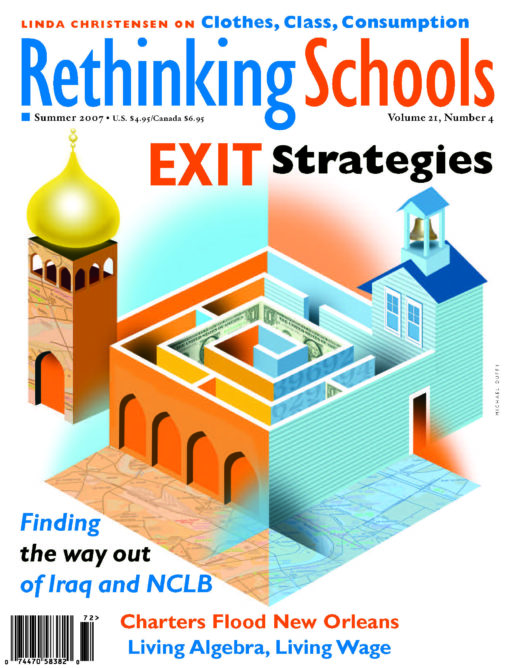Short Stuff 21.4
Illustrator: P.S. Mueller

Crumbs for Kids
The percentage of federal spending on children has declined significantly since 1960, according to a recent Urban Institute study. It’s only going to get worse over the next decade, the Washington, D.C.-based think tank predicts.
“While children enjoyed 20 percent of federal domestic spending in 1960, their share of the increase in spending between 1960 and 2006 was less than 15 percent,” said the report’s authors. “Under current law, children’s share of the increase from 2006 to 2017 would be less than 6 percent. That is, children’s programs would gain only $36 billion while other domestic programs would expand by $609 billion.”
Over the next 10 years, children’s programs are scheduled to decline both as a share of GDP and domestic spending, because they do not compete on a level playing field with rapidly growing entitlement programs such as Social Security and Medicare, the report said.
The institute calculates that by 2017, if current spending and revenue policies continue, “children’s spending will decline from 2.6 to 2.1 percent of GDP, while Social Security, Medicare, and Medicaid will rise from 7.6 to 9.5 percent.”
Black Revisionist Month
Emmett Till—sexual harasser. That’s what two ex-Los Angeles charter school teachers say they were told when the school’s principal nixed a planned reciting of a poem about Till during a Black History Month program.
Administrators at Celerity Nascent Charter School fired 7th-grade teacher Marisol Alba and math teacher Sean Strauss, who signed one of several protest letters written by students after the school stopped a planned reading of “A Wreath for Emmett Till” at a school program, according to the Los Angeles Times.
Till was the 14-year-old black lynched in 1954 in Mississippi for allegedly whistling at a white woman.
“Teachers and students said the administration suggested that the Till case was not fitting for a program intended to be celebratory, and that Till’s actions could be viewed as sexual harassment,” the Los Angeles Times reported in March.
“I thought the most that would happen to me [after the event was canceled] is that I’d get talked to and it would be turned into a learning and teaching experience,” Alba said.
There is no union representation for the school’s teachers. Indeed, only 10 percent of California charter school teachers are affiliated with a union.
The school’s executive director, Vielka McFarlane, denies the allegation that anyone referred to Till as a sexual harasser. However, she did not back away from her contention that the poem was inappropriate for Celerity students.
“Our whole goal is how do we get these kids to not look at all of the bad things that could happen to them and instead focus on the process of how do we become the next surgeon or the next politician,” said McFarlane, who co-founded the school.
High School Musicals Big Buck Affairs
The “Hey kids, let’s put on a show” attitude may still be at the core of the high school musical, but the eye-bulging production costs at some Seattle-area schools rival small community theaters.
According to the Seattle Times, the average high school musical costs less than $10,000. Nevertheless, some musicals staged last spring cost three times that amount. Bishop Blanchet, a Catholic high school, spent $60,000 to put on a production of “Grease.”
Blanchet recently installed a $160,000 lighting and sound system in its theater. However, the school rented a larger theater in downtown Seattle to “give students a real-life musical experience.”
Roosevelt, with a predominately white and Asian student population, is the “only Seattle public school with an extensive drama program, with courses in lighting and stage design, three voice coaches and a new $3.1 million auditorium with an orchestra pit and balcony seating,” the Times reported.
The program’s booster club raises as much as $40,000 annually.
Not all Seattle public schools are as lucky. Rainier Beach High, with a predominately black and Asian student population, put on a production of “The Wiz” for $1,000; the drama teacher raised the money.

